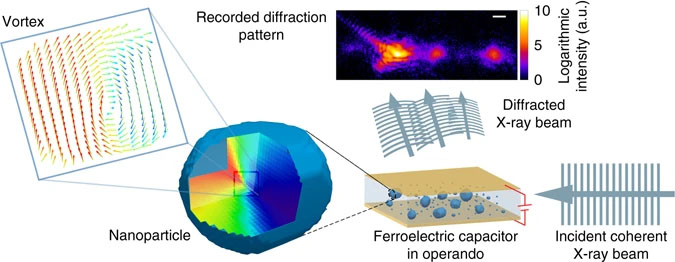Bragg Coherent Diffraction Imaging: Unlocking the Secrets of Nanocrystals
What is Bragg Coherent Diffraction Imaging?
Bragg coherent diffraction imaging (BCDI) is a powerful X-ray imaging technique that allows researchers to visualize the internal structure and strain fields of nanocrystals with exceptional sensitivity and resolution. Classical X-ray crystallography relies upon crystals which are large enough that their asymmetric units can be considered to repeat indefinitely; such crystals therefore produce Bragg diffraction spots when illuminated with X-rays.
Nanocrystals produce diffraction patterns similar to their larger brothers, but with distributions of intensity where one would expect to find each Bragg spot. The shape of the nanocrystal may be deduced from shape of these distributions. Phase information arises from strains within the crystals, and these strains may also be imaged. By measuring the diffraction patterns of coherent X-rays scattered from a nanocrystal and applying advanced computational algorithms, BCDI can reconstruct three-dimensional images of the crystal lattice and reveal nanoscale defects, deformations, and other structural features.

Key Principles of BCDI
BCDI relies on several key principles to achieve its exceptional imaging capabilities:
Coherent X-rays
BCDI utilizes highly coherent X-ray sources, such as synchrotron radiation or X-ray free-electron lasers (XFELs). Coherent X-rays have a well-defined phase relationship, which is essential for capturing the interference patterns that encode the structural information of the nanocrystal.
Bragg Diffraction
The technique is based on Bragg diffraction, which occurs when X-rays are scattered from the periodic lattice planes of a crystal. By selecting a specific Bragg reflection, BCDI can probe the atomic structure and strain fields along a particular crystallographic direction.
Oversampling and Phase Retrieval
BCDI employs oversampling techniques, where the diffraction pattern is measured with a spatial resolution finer than the Nyquist sampling limit. This oversampling, combined with iterative phase retrieval algorithms, allows the reconstruction of the complex-valued object from the measured diffraction intensities.
Advantages of BCDI
BCDI offers several key advantages over other imaging techniques:
- High Sensitivity: BCDI is exceptionally sensitive to lattice distortions and strain fields, enabling the detection of subtle structural changes and defects in nanocrystals.
- Nanoscale Resolution: With a spatial resolution approaching the atomic scale, BCDI can reveal intricate details of nanocrystal structure and morphology.
- 3D Imaging: By measuring diffraction patterns at different crystal orientations, BCDI can reconstruct three-dimensional images of nanocrystals, providing a comprehensive view of their internal structure.
- Non-destructive: BCDI is a non-invasive and non-destructive technique, allowing the study of nanocrystals without damaging or altering their properties.
Applications of BCDI
BCDI has found numerous applications in nanoscience and nanotechnology, including:
Nanocrystal Growth and Synthesis
BCDI can provide valuable insights into the growth mechanisms and structural evolution of nanocrystals during synthesis. By imaging nanocrystals at different stages of growth, researchers can optimize synthesis conditions and develop strategies for controlling nanocrystal properties.
Defect Analysis
BCDI is a powerful tool for studying defects in nanocrystals, such as dislocations, stacking faults, and grain boundaries. Understanding the nature and distribution of defects is crucial for tailoring the electronic, optical, and mechanical properties of nanocrystals for various applications.
In Situ and Operando Studies
BCDI can be combined with in situ and operando techniques to study nanocrystals under realistic operating conditions, such as during catalysis, energy storage, or sensing. These studies provide valuable insights into the dynamic structural changes and strain evolution in nanocrystals under external stimuli.
Challenges and Future Perspectives
Despite the impressive capabilities of BCDI, several challenges need to be addressed to fully exploit its potential. One of the main challenges is the requirement for highly coherent X-ray sources, which are currently limited to synchrotron facilities and XFELs. The development of compact and accessible coherent X-ray sources could significantly expand the availability and applicability of BCDI.
Future advancements in BCDI will focus on improving the spatial and temporal resolution, extending the technique to a wider range of materials and sample environments, and integrating BCDI with complementary characterization methods. The combination of BCDI with other imaging modalities, such as electron microscopy and atomic force microscopy, could provide a more comprehensive understanding of nanocrystal structure and properties.
Further Reading
Journal of Applied Crystallography, Refinements for Bragg coherent X-ray diffraction imaging: electron backscatter diffraction alignment and strain field computation
Journal of Physics Communications, Simulation of Bragg coherent diffraction imaging
